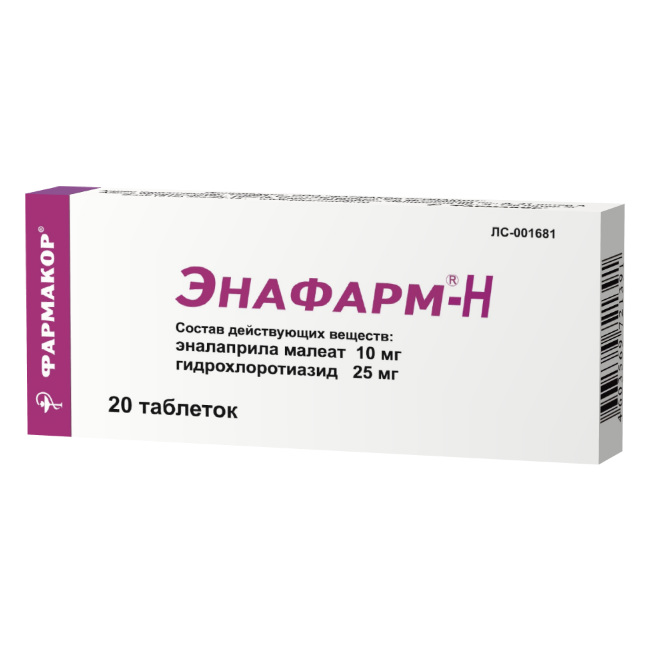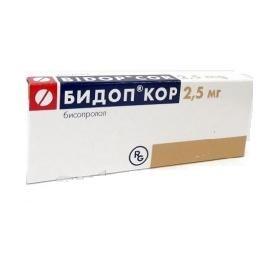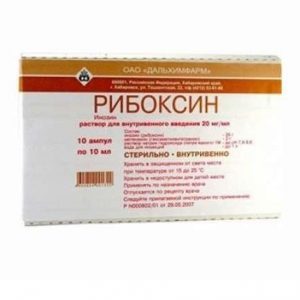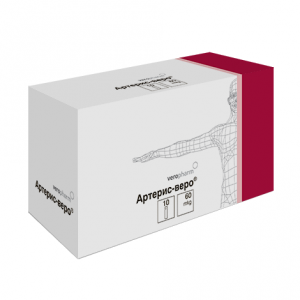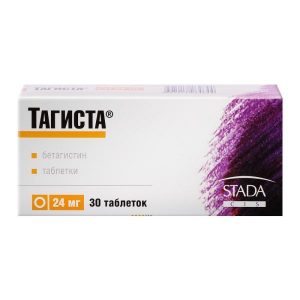Description
Release form
In a dry, dark place and out of the reach of children, at a temperature of no higher than 25 ° C.
Indications
Arterial hypertension. Patients who are shown combination therapy.
Contraindications
Hypersensitivity (including to individual components of the drug or sulfonamide derivatives) of anuria, severe renal dysfunction (creatinine clearance less than 30 ml / min) history of angioedema associated with the use of previously ACE inhibitors, as well as hereditary or idiopathic angioedema primary hyperaldosteronism Addison porphyria disease under the age of 18 years (efficacy and safety have not been established). Due to the fact that the preparation contains lactose monohydrate, Enafarm ®-N is not recommended for patients with lactose intolerance, lactase deficiency, glucose-galactose malabsorption.
Precautions: bilateral renal artery stenosis or single kidney artery stenosis, renal dysfunction (creatinine clearance 30 – 75 ml / min) severe aortic and mitral stenosis or idiopathic hypertrophic obstructive cardiomyopathy coronary heart disease and cerebrovascular disease (including cerebrovascular insufficiency) chronic heart failure severe autoimmune systemic connective tissue diseases (including systemic lupus erythematosus, scleroderma) inhibition of bone marrow hematopoiesis diabetes mellitus hyperkalemia condition after trans nt kidney condition, accompanied by a decrease in circulating blood volume (as a result of diuretic therapy, with limited intake of salt, diarrhea and vomiting) hypercalcemia gout hyperuricemia, advanced age.
Recommendations for the use of
The treatment of hypertension does not start with a combination of drugs. Initially, adequate doses of the individual components should be determined. Dosage should always be selected individually for each patient.
The usual dose is 1 tablet per day. Patients should take the whole tablet during or after meals with a small amount of liquid, preferably in the morning. In case of skipping the next dose of the drug, it must be taken as soon as possible if a sufficiently large amount of time remains before the next dose.
If several hours are left before the next dose, you should wait and take only it. You should never double the dose. If a satisfactory therapeutic effect is not achieved, it is recommended to add another drug or change the therapy. In patients undergoing diuretic therapy, it is recommended to cancel the treatment or reduce the dose of diuretics at least 3 days before the start of treatment with Enafarm ®-N to prevent the development of symptomatic arterial hypotension. Before starting treatment, kidney function should be examined. For patients with creatinine clearance greater than 30 ml / min or serum creatinine less than 265 mol / l (3 mg / 100 ml), the drug should be used after preliminary selection of doses of each of the components.
Special instructions
Enalapril
A pronounced decrease in blood pressure with all the clinical consequences can be observed after the first administration of the drug Enafarm ®-H in patients with severe heart failure and hyponatremia, severe renal failure, hypertension or dysfunction of the left ventricle, and who are in a state of hypovolemia, as a result of diuretic therapy, diets with restriction of salt, diarrhea, vomiting or hemodialysis. Arterial hypotension after taking the first dose and its more serious consequences is a rare and passing phenomenon. In the event of arterial hypotension, it is necessary to lay the patient on his back with a low headboard and, if necessary, replenish the volume of circulating blood by infusion of a 0.9% sodium chloride solution. Transient arterial hypotension is not a contraindication for continued treatment. After normalizing blood pressure and replenishing the volume of circulating blood, patients usually tolerate subsequent doses well. It is necessary to avoid prescribing Enafarm ®-H to patients with bilateral renal artery stenosis or a single kidney renal artery stenosis, as this can lead to impaired renal function or even acute renal failure (enalapril effect). Therefore, it is necessary to monitor renal function before and during the treatment with the drug. Caution is required in patients with coronary heart disease, severe cerebrovascular disease, aortic stenosis, or other stenosis that impede the outflow of blood from the left ventricle, severe atherosclerosis, in elderly patients as a result of the risk of arterial hypotension and impaired perfusion of the heart, brain, and kidneys. Regular monitoring of the serum electrolyte content during the treatment period is necessary to identify possible violations of the water-electrolyte balance. The determination of serum electrolytes is mandatory for patients with prolonged diarrhea, vomiting and receiving intravenous infusions. In patients taking the drug Enafarm ®-H, it is necessary to identify signs of imbalance in the water-electrolyte balance, such as, dry oral mucosa, thirst, weakness, drowsiness, lethargy, agitation, muscle pain and cramps (mainly calf muscles), decreased blood pressure, tachycardia, oliguria and gastrointestinal disturbances (nausea, vomiting). Enalapril (like other ACE inhibitors), has a less pronounced hypotensive effect in patients of the Negroid race compared to representatives of other races. In the treatment of ACE inhibitors, including enalapril, rare cases of angioedema of the face, limbs, lips, tongue, glottis and / or larynx have been described. In such cases, immediate termination of enalapril treatment and the establishment of careful monitoring of the patient’s condition in order to control clinical symptoms are necessary. Only after their disappearance can observation be stopped. When edema spreads to the face and lips, specific treatment is usually not required, in these cases antihistamine therapy is effective. With angioedema, accompanied by laryngeal edema, a fatal outcome is possible. In cases where the edema is localized in the area of the tongue, glottis or larynx, which can lead to airway obstruction, epinephrine (adrenaline) should be immediately administered subcutaneously (at a dilution of 1: 1000 (0.3 or 0.5 ml) and airway patency (intubation or laryngotomy). In patients of the Negroid race who took ACE inhibitors, angioedema was observed more often than in other patients. The antihypertensive effect of the drug Enafarm ®-N may increase after sympathectomy. Due to the increased risk of an aphylactic reactions should not be prescribed Enafarm ®-H in patients hemodialysis using high-strength polyacrylonitrile membranes (AN69 ®) undergoing apheresis with dextran sulfate and immediately before the desensitization procedure for aspen or bee venom. During treatment with the drug, hypersensitivity reactions may occur in patients without previous allergies or bronchial asthma. A deterioration in the course of systemic lupus erythematosus has been reported. Several cases of acute liver failure with cholestatic jaundice, liver necrosis and death (rare) have been reported during treatment with ACE inhibitors. The cause of these syndromes is not completely clear. If jaundice occurs and an increase in the activity of hepatic transaminase occurs, treatment should be stopped immediately, patients should be monitored. Caution is also necessary in patients taking sulfonamides or oral hypoglycemic agents from the sulfonylurea group (cross-sensitivity is possible). During treatment, periodic monitoring of the number of leukocytes is required, especially in patients with connective tissue or kidney diseases. In patients after extensive surgeries receiving drugs that cause hypotension during general anesthesia, enalapril can block the formation of angiotensin II, secondary to the compensatory release of renin. If the doctor suggests this mechanism of arterial hypotension, treatment can be carried out by increasing the volume of circulating blood.
Hydrochlorothiazide
Enafarm ®-H should be used with caution and under medical supervision in patients with liver failure or progressive liver disease, since hydrochlorothiazide can cause hepatic coma even with minimal electrolyte disturbances. Caution is necessary when used in patients with impaired renal function (creatinine clearance from 30 to 80 ml / min). Patients taking hydrochlorothiazide may develop azotemia. Patients with impaired renal function may show signs of cumulation of the drug. If necessary, a combination of enalapril with a lower amount of hydrochlorothiazide may be used, or combination therapy with enalapril and hydrochlorothiazide should be discontinued. During treatment with Enafarm ®-H, hypomagnesemia and sometimes hypercalcemia may occur, resulting from increased excretion of magnesium and slowed excretion of calcium in the urine under the influence of hydrochlorothiazide. A significant increase in serum calcium may be a sign of latent hyperparathyroidism. In some patients, hyperuricemia or worsening of gout may result from hydrochlorothiazide. If there is an increase in the content of uric acid in the blood serum, treatment should be discontinued. It can be resumed after normalization of laboratory parameters and subsequently carried out under their control. Caution is necessary in all patients receiving treatment with hypoglycemic agents for oral administration or insulin, since hydrochlorothiazide can weaken, and enalapril enhance their action. Patients with diabetes should be observed more often by the attending physician, and, if necessary, some change in the dose of hypoglycemic agents may be required. During treatment, periodic monitoring of serum electrolytes, glucose, urea, creatinine and the activity of liver transaminase, as well as urine protein, is necessary. Treatment with the drug should be discontinued before conducting parathyroid function tests. The hydrochlorothiazide included in the preparation may give a false positive reaction during the doping control
Side effects
Classification of the incidence of side effects of the World Health Organization (WHO): – very often (> 1/10)
– often (> 1/100 and <1/10) – infrequently (> 1/1000 and < 1/100) – rarely (> 1/10000 and <1/1000) – very rare (<1/10000) – frequency is unknown (it is impossible to estimate the frequency from the available data). Disorders from the blood and lymphatic system: infrequently – anemia (including aplastic and hemolytic) rarely – neutropenia, decreased hemoglobin and hematocrit, thrombocytopenia, agranulocytosis, inhibition of bone marrow function, pancytopenia, lymphadenopathy, autoimmune diseases. Metabolic and nutritional disorders: infrequently – hypoglycemia. Disorders of the endocrine system: frequency unknown – syndrome of impaired secretion of antidiuretic hormone. Disorders from the central nervous system and mental disorders: often – headache, depression, fainting infrequently – confusion, drowsiness, insomnia, nervousness, paresthesia, dizziness rarely – sleep disturbances, unusual dreams. Violations of the organ of vision: very often – visual impairment. Disorders from the cardiovascular system: often – a pronounced decrease in blood pressure (including orthostatic hypotension), chest pain, rhythm disturbances, tachycardia, angina pectoris infrequently – myocardial infarction or stroke, palpitations rarely – Raynaud’s syndrome. Disorders of the respiratory system: very often – cough often – shortness of breath rarely – rhinorrhea, sore throat, hoarseness, bronchospasm rarely – pulmonary infiltrates, rhinitis, allergic alveolitis / eosinophilic pneumonia. Digestive disorders: very often – nausea often – diarrhea, abdominal pain, taste disturbances infrequently – intestinal obstruction, pancreatitis, vomiting, dyspepsia, constipation, anorexia, gastritis, dry oral mucosa, peptic ulcer rarely – stomatitis, aphthous ulcers, glossitis, liver failure, hepatitis (hepatocellular or hemolytic), cholestasis, fulminant liver necrosis is very rare – intestinal angioedema. From the skin and subcutaneous tissue: often – skin rash, angioedema of the face, limbs, lips, tongue, glottis, larynx infrequently – increased sweating, skin itching, urticaria, alopecia rarely: multif rarely bronchospasm – pulmonary infiltrates, rhinitis, allergic alveolitis / eosinophilic pneumonia. Digestive disorders: very often – nausea often – diarrhea, abdominal pain, taste disturbances infrequently – intestinal obstruction, pancreatitis, vomiting, dyspepsia, constipation, anorexia, gastritis, dry oral mucosa, peptic ulcer rarely – stomatitis, aphthous ulcers, glossitis, liver failure, hepatitis (hepatocellular or hemolytic), cholestasis, fulminant liver necrosis is very rare – intestinal angioedema. From the skin and subcutaneous tissue: often – skin rash, angioedema of the face, limbs, lips, tongue, glottis, larynx infrequently – increased sweating, skin itching, urticaria, alopecia rarely: multif rarely bronchospasm – pulmonary infiltrates, rhinitis, allergic alveolitis / eosinophilic pneumonia. Digestive disorders: very often – nausea often – diarrhea, abdominal pain, taste disturbances infrequently – intestinal obstruction, pancreatitis, vomiting, dyspepsia, constipation, anorexia, gastritis, dry oral mucosa, peptic ulcer rarely – stomatitis, aphthous ulcers, glossitis, liver failure, hepatitis (hepatocellular or hemolytic), cholestasis, fulminant liver necrosis is very rare – intestinal angioedema. From the skin and subcutaneous tissue: often – skin rash, angioedema of the face, limbs, lips, tongue, glottis, larynx infrequently – increased sweating, skin itching, urticaria, alopecia rarely: multif rhinitis, allergic alveolitis / eosinophilic pneumonia. Digestive disorders: very often – nausea often – diarrhea, abdominal pain, taste disturbances infrequently – intestinal obstruction, pancreatitis, vomiting, dyspepsia, constipation, anorexia, gastritis, dry oral mucosa, peptic ulcer rarely – stomatitis, aphthous ulcers, glossitis, liver failure, hepatitis (hepatocellular or hemolytic), cholestasis, fulminant liver necrosis is very rare – intestinal angioedema. From the skin and subcutaneous tissue: often – skin rash, angioedema of the face, limbs, lips, tongue, glottis, larynx infrequently – increased sweating, skin itching, urticaria, alopecia rarely: multif rhinitis, allergic alveolitis / eosinophilic pneumonia. Digestive disorders: very often – nausea often – diarrhea, abdominal pain, taste disturbances infrequently – intestinal obstruction, pancreatitis, vomiting, dyspepsia, constipation, anorexia, gastritis, dry oral mucosa, peptic ulcer rarely – stomatitis, aphthous ulcers, glossitis, liver failure, hepatitis (hepatocellular or hemolytic), cholestasis, fulminant liver necrosis is very rare – intestinal angioedema. From the skin and subcutaneous tissue: often – skin rash, angioedema of the face, limbs, lips, tongue, glottis, larynx infrequently – increased sweating, skin itching, urticaria, alopecia rarely: multif Digestive disorders: very often – nausea often – diarrhea, abdominal pain, taste disturbances infrequently – intestinal obstruction, pancreatitis, vomiting, dyspepsia, constipation, anorexia, gastritis, dry oral mucosa, peptic ulcer rarely – stomatitis, aphthous ulcers, glossitis, liver failure, hepatitis (hepatocellular or hemolytic), cholestasis, fulminant liver necrosis is very rare – intestinal angioedema. From the skin and subcutaneous tissue: often – skin rash, angioedema of the face, limbs, lips, tongue, glottis, larynx infrequently – increased sweating, skin itching, urticaria, alopecia rarely: multif Digestive disorders: very often – nausea often – diarrhea, abdominal pain, taste disturbances infrequently – intestinal obstruction, pancreatitis, vomiting, dyspepsia, constipation, anorexia, gastritis, dry oral mucosa, peptic ulcer rarely – stomatitis, aphthous ulcers, glossitis, liver failure, hepatitis (hepatocellular or hemolytic), cholestasis, fulminant liver necrosis is very rare – intestinal angioedema. From the skin and subcutaneous tissue: often – skin rash, angioedema of the face, limbs, lips, tongue, glottis, larynx infrequently – increased sweating, skin itching, urticaria, alopecia rarely: multif dyspepsia, constipation, anorexia, gastritis, dry oral mucosa, peptic ulcer rarely – stomatitis, aphthous ulcers, glossitis, liver failure, hepatitis (hepatocellular or hemolytic), cholestasis, fulminant liver necrosis is very rare – intestinal angioedema. From the skin and subcutaneous tissue: often – skin rash, angioedema of the face, limbs, lips, tongue, glottis, larynx infrequently – increased sweating, skin itching, urticaria, alopecia rarely: multif dyspepsia, constipation, anorexia, gastritis, dry oral mucosa, peptic ulcer rarely – stomatitis, aphthous ulcers, glossitis, liver failure, hepatitis (hepatocellular or hemolytic), cholestasis, fulminant liver necrosis is very rare – intestinal angioedema. From the skin and subcutaneous tissue: often – skin rash, angioedema of the face, limbs, lips, tongue, glottis, larynx infrequently – increased sweating, skin itching, urticaria, alopecia rarely: multifabnormal erythema, Stevens-Johnson syndrome, exfoliative dermatitis, toxic epidermal necrolysis, pemphigus, erythroderma. From the urinary system: infrequently – impaired renal function, acute renal failure, proteinuria rarely – oliguria. From the reproductive system: infrequently – decreased potency rarely – gynecomastia. Others: very often – asthenia often – fatigue infrequently – muscle cramps, tinnitus, general malaise, fever. Laboratory studies: often – hyperkalemia, hypercreatininemia infrequently – hyperuricemia, hyponatremia rarely – increased activity of “hepatic” transaminases, hyperbilirubinemia. When using ACE inhibitors, a symptom complex is described, including fever, serositis, vasculitis, myalgia, myositis, arthralgia, arthritis, positive test for antinuclear antibodies, increased ESR, eosinophilia, leukocytosis, exanthema, photosensitivity reactions or other dermatological disorders. With the simultaneous administration of ACE inhibitors and intravenous administration of sodium aurothiomalate, a symptom complex has been described, including facial flushing, nausea, vomiting, and arterial hypotension. Hydrochlorothiazide Disorders from the blood and lymphatic system: rarely aplastic anemia, hemolytic anemia, neutropenia, thrombocytopenia, agranulocytosis, inhibition of bone marrow function, leukopenia. Metabolic and nutritional disorders: infrequently – anorexia, hyperglycemia, hyperuricemia, hypercholesterolemia, hypertriglyceridemia, hypoglycemia, hypokalemia, hyponatremia, exacerbation of the course of gout. Disorders from the central nervous system and mental disorders: often depression, sleep disturbances infrequently – insomnia, paresthesias, dizziness rarely – paresis (due to hypokalemia). Disorders of the organ of vision: rarely – visual impairment, xanthopsia. Disorders from the cardiovascular system: rarely – orthostatic hypotension), rhythm disturbances frequency unknown – necrotic angiitis (vasculitis, skin vasculitis). Disorders of the respiratory system: infrequently – respiratory distress syndrome (including pneumonitis and pulmonary edema). Digestive system disorders: infrequently – jaundice (intrahepatic cholestasis) rarely – sialadenitis, constipation, diarrhea, irritation of the gastrointestinal mucosa very rarely – pancreatitis. From the skin and subcutaneous tissue: rarely – photosensitization very rarely – urticaria, toxic epidermal necrolysis, Lyell syndrome, lupus-like skin reactions, exacerbation of systemic lupus erythematosus. From the musculoskeletal system: infrequently – muscle spasm. From the urinary system: infrequently – glucosuria, interstitial nephritis, renal failure. Other: infrequently – increased body temperature, hyperkalemia, vasculitis. Overdose Symptoms: increased diuresis, marked decrease in blood pressure with bradycardia or other cardiac arrhythmias, convulsions, paresis, paralytic ileus, impaired consciousness (including coma), renal failure, disturbance of acid-base balance, disturbance of water-electrolyte blood balance, palpitations, dizziness, cough. Treatment: the patient is moved to a horizontal position with a low headboard. In mild cases, gastric lavage and oral administration of saline are indicated, in more serious cases, measures aimed at stabilizing blood pressure – intravenous administration of 0.9% sodium chloride solution, plasma substitutes. The patient needs to control the level of blood pressure, heart rate (HR), respiratory rate, serum urea, creatinine, electrolytes and diuresis, if necessary, intravenous administration of angiotensin II, hemodialysis (enalaprilat excretion rate – 62 ml / min). Storage conditions Dry, protected from light and inaccessible to children, at a temperature not exceeding 25 ° C. The Expiration of is 3 years. After the expiry date, Do not use the preparation indicated on the package. Deystvuyuschee substances Hydrohlorotyazyd, enalapril Pharmacy terms Prescription
